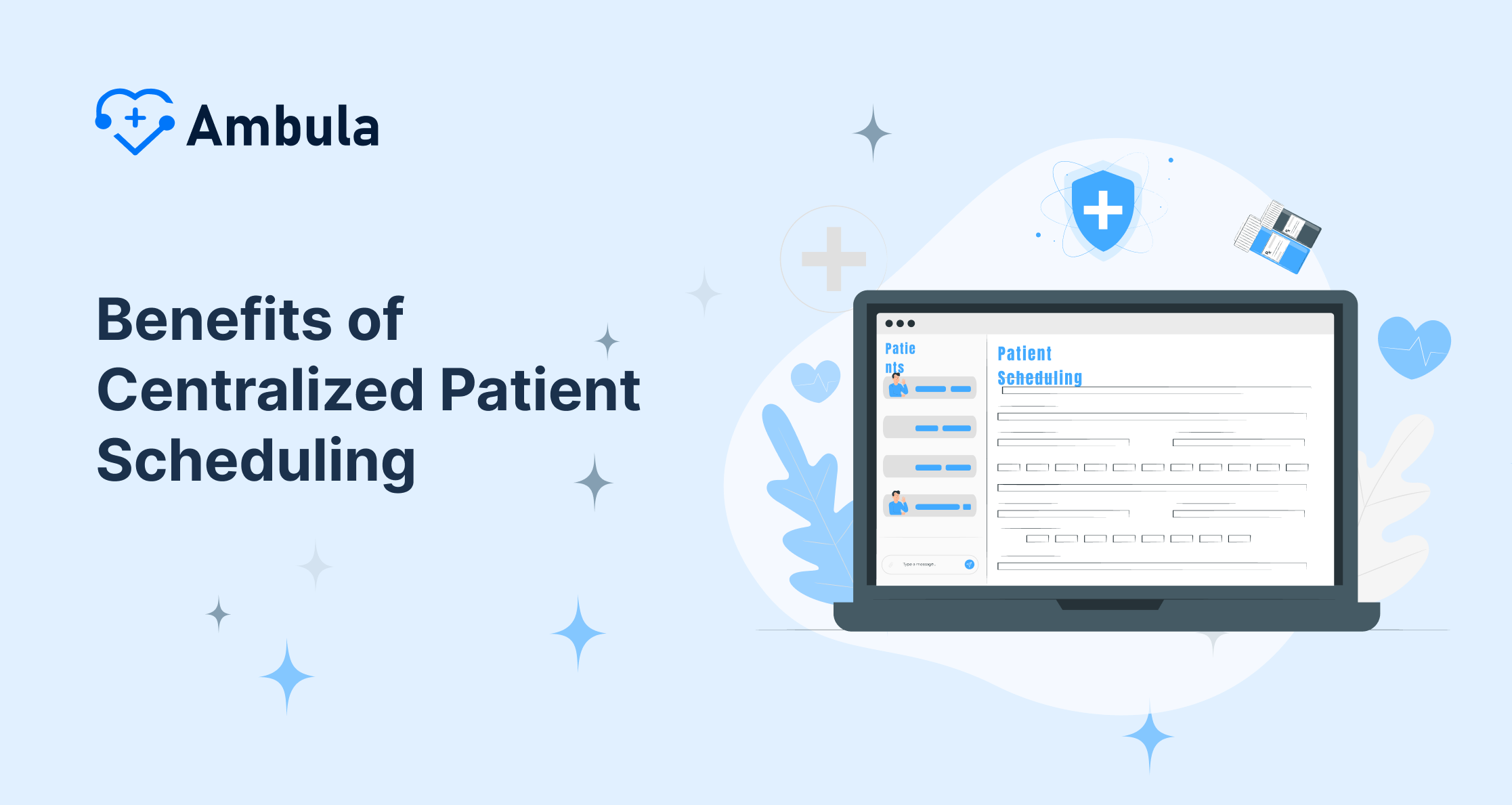
Today, we’re diving into the world of patient scheduling workflow. You might wonder – it’s just scheduling appointments, right? Is it so much more? For starters, patient scheduling workflow refers to booking patient appointments. But in healthcare, it’s not as simple as just putting a name on a calendar. It requires juggling the availability of medical practitioners, efficiently using resources, and prioritizing patient needs.
This workflow is a vital cog in the machine that is healthcare. It’s like a symphony conductor, ensuring every piece is where it should be and plays when it should. Now, manage that on an impressive scale where hundreds, if not thousands, of patients need to be seen. That’s why healthcare professionals strive to make patient scheduling as efficient as possible because an effective workflow can significantly enhance the service quality patients receive.
Remember last time you had your doctor’s appointment, which was smooth sailing without unnecessary delays? You have that efficient patient scheduling workflow to thank! Essentially, the workflow begins when a patient is identified and ends when they’ve completed their visit, ensuring every step in between runs like a well-oiled machine.
The Basic Steps in a Patient Scheduling Workflow
Now that we know what a patient scheduling workflow is, let’s discuss the steps involved. The first step is to identify a patient, which involves recording their basic information such as names, insurance details, the reason for the visit, and more. This identification process helps healthcare professionals understand who the patient is and what services they’ll need.
After identifying a patient, healthcare staff checks the relevant doctor’s availability, considering the patient’s convenience to schedule the appointment. This step often balances patient urgency or preference and doctor availability. But remember, it’s more than just picking a date and time. The healthcare staff must consider other factors, such as managing schedule gaps and ensuring no overlap between appointments.
The final few steps involve sending appointment confirmations and reminders. The patient’s arrival is noted on the day of the appointment, and they’re then guided to where they need to be. After their visit, the scheduling workflow ensures that future appointments are booked if required. The process seems simple, but managing it efficiently can be quite challenging in practice.
Benefits of Efficient Patient Scheduling Workflow
The benefits of an efficient patient scheduling workflow are numerous. For one, it’s a crucial factor in reducing patient waiting time. We’ve all been there, sitting in a waiting room feeling anxious, frustrated, and wondering when we’ll finally be called in. An effective scheduling system can alleviate this by ensuring that patient appointments are organized and no valuable time is wasted.
But apart from patient convenience, let’s look at it from a healthcare provider’s standpoint. An efficient scheduling workflow minimizes downtime between patients, ensuring that doctors and other medical staff can maximize their productivity. It even goes a step further. An efficient scheduling system can help healthcare facilities predict patient inflow, allowing them to balance their workforce better and reduce operation costs.
Still, it’s not all about the numbers. Efficient workflows also contribute to patient satisfaction. You’ll find stressed staff and unhappy patients in a clinic with disorganized patient scheduling. Compare that to a clinic with a well-managed patient scheduling workflow – the difference is night and day. The process becomes much smoother, and patients feel more valued — improving the overall patient experience.
Common Challenges in Managing a Patient Scheduling Workflow
Despite the benefits, managing patient scheduling isn’t without its challenges. One of the most prominent issues is last-minute cancellations and no-shows. These empty slots can disrupt an organized schedule, and scheduling suddenly becomes a tricky puzzle.
Another challenge lies in overbooking. In fear of cancellations and no-shows, clinics may overbook appointments, which can unfortunately lead to longer waiting times. Long waiting times can irk patients and give them a not-so-great experience.
Incorrect patient identification poses another challenge. Errors in patient identification can lead to numerous issues, from booking appointments with the wrong doctor to providing incorrect treatments. Moreover, not reminding patients about their appointments can lead to a higher rate of no-shows. All these challenges contribute to inefficiencies, negatively impacting the healthcare service provider and the patient.
The Role of Technology in Patient Scheduling Workflow
Thank goodness for modern technology! It’s playing a vital role in patient scheduling workflow and helping clinics overcome their challenges. The healthcare cloud is a breakthrough paving the way for better schedule management. Imagine a digital platform where you can book, track, reschedule, or cancel appointments from anywhere, at any time.
The healthcare cloud doesn’t stop there. It also helps with robust patient identification. This seamless process ensures that each patient’s information and history are only one click away, minimizing the chances of errors. The right healthcare cloud technology adds a layer of security, accuracy, and connectivity by synchronizing information across devices and departments.
Improved scheduling is just one component of a much larger revolution in healthcare fidelity. With automated reminders for appointments, the software helps to drastically cut down the rate of no-shows. Moreover, software systems provide detailed reports to identify scheduling bottlenecks, facilitating the improvement of overall clinic efficiency.
Successful Implementation of a Patient Scheduling Workflow
Healthcare facilities worldwide have seen tremendous benefits from well-implemented patient scheduling workflows. Let’s discuss a local health clinic’s success story. This clinic consistently suffered from long patient waiting times and numerous canceled appointments. The management decided to turn the tables with a cloud-based scheduling system.
Just a few months in, the clinic saw a significant decrease in waiting times, no-shows, and cancellations. The secret was a more organized and efficient scheduling workflow. This real-life example highlights how modern technology can disrupt and enhance healthcare services.
Strategies for Improving Patient Scheduling Workflow
So, how can healthcare facilities improve their patient scheduling workflows? Implementing a reliable cloud-based scheduling software can get the ball rolling. With automation put into play, scheduling becomes a breeze, reducing errors and improving efficiency. A user-friendly interface can streamline the workflow, saving hours in staff training.
Training your staff to effectively use this scheduling system is another crucial measure. After all, proficiency in manipulating the software matters in deriving its full benefits. Regular staff training sessions, webinars, online courses, or workshops can equip them with the necessary skills and knowledge.
Consider implementing telemedicine as well. Virtual appointments break down traditional barriers of time and location, allowing for flexible scheduling and potentially greater accessibility for patients. While telemedicine may not replace in-person visits entirely, it’s a viable supplement.
The Future of Patient Scheduling Workflow
The horizon of the patient scheduling workflow is expansive and promising. The advent of technology and the rise of healthcare cloud solutions are setting the trajectory for even higher efficiency in managing appointments and improving patient experiences. AI and big data have significant potential to streamline the scheduling process further.
Imagine a system that can smartly predict appointment cancellations and act to minimize patient waiting time. It’s not just a pipedream, but feasible future advancement! As healthcare facilities embrace technology, we expect to see a remarkable transformation in patient scheduling workflow.
Essential Features Needed in Patient Scheduling Software
Are you in the market for patient scheduling software? Ensure it includes some key features to get the most out of it. Reliable software should have an easy-to-use interface to identify a patient, record appointments accurately, manage cancellations, and monitor follow-ups.
What’s more valuable is the software’s ability to send automated reminders, cutting down the chances of no-shows and last-minute cancellations. Integration with other hospital systems is vital, too. It allows for a holistic view of all patient data, leading to more informed decision-making.
Conclusion: The Importance of Continual Improvement in Patient Scheduling Workflow
As we wrap up this conversation, we understand that continually improving our patient scheduling workflows is the need of the hour to meet the ferocious demands of the future. This lays the grounds for efficient healthcare services, reduces the wait time, and significantly improves patient satisfaction.
A win-win for healthcare providers and patients alike. It’s time to bid farewell. Through this enlightening journey, we hope we’ve clarified the unseen, intricate ballet behind your timely appointment with the doctor. Here’s to the efficient scheduling systems that ensure you and I have the best healthcare services!




